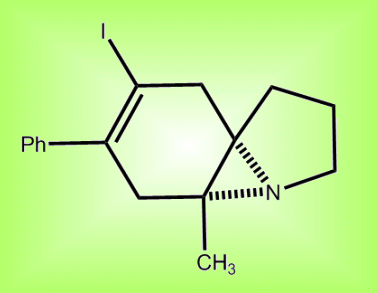Burkhard Luy, Karlsruhe Institute of Technology, Germany, and co-workers at the Technische Universität München, Germany, have shown that the NMR parameters, residual dipolar couplings (RDCs), canhelp determining the structure of chemical compounds when traditional methods fail.
The team embedded molecules of unknown compounds into a polystyrene/CDCl3 gel which constricted their mobility. By stretching the gel, the molecules can be aligned along a preferred orientation. While residual dipolar couplings average out in solution, they become measurable in such partially aligned samples and provide valuable structural information that can be used to build a model of the molecule. The team proved this by analyzing the unknown product of the reaction between an azide-containing 1,5-enyne and electrophilic iodine and identified it as the tricyclic aziridine above.

Images: (c) Wiley-VCH
- Residual Dipolar Couplings as a Powerful Tool for Constitutional Analysis: The Unexpected Formation of Tricyclic Compounds
G. Kummerlöwe, B. Crone; M. Kretschmer, S. F. Kirsch, B. Luy,
Angew. Chem. Int. Ed. 2011.
DOI: 10.1002/anie.2010007305




